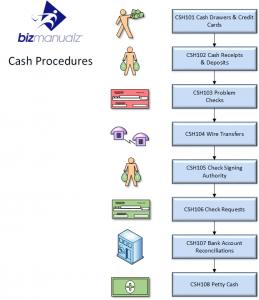12 3 Common-Size Financial Statements Managerial Accounting
How you can make Sex Toys
17 Marzo 2022Identifying key roles and structure for software development teams
18 Marzo 2022
While they don’t tell you the whole story at a glance, they do a very good job in identifying areas of potential interest for further investigation. Generally speaking, a common-size financial statement is a type of analysis of an income statement that expresses each line of the statement as a percentage of sales. The common size income statement shows that the percentage of COGS has also gone up.
It could be that at least a part of it was due to factors beyond its control. For example, weather conditions might have reduced the production of a raw material it needs and hence increased the price. At first glance, the cost of goods sold may not look like a serious concern. There is only a 10% difference between what Sporty Shoes is paying and what Trendy Trainers is paying. The problem is that the cost of goods sold is a significant expense for both companies.
What are the Benefits of Common Size Analysis?
Common-size financial statements are related to a technique known as vertical analysis. Common size statements have some disadvantages and limitations that should be taken into account. For example, you cannot tell how much revenue or profit a company has generated or how fast it has grown using common size statements. Additionally, you may not be able to compare the depreciation or inventory valuation methods of two companies, nor can you adjust for changes in purchasing power or currency value. Overall, total operating expenses in this scenario dropped by more than 3 percentage points in 2020 and then increased again in 2021.
One version of the common size cash flow statement expresses all line items as a percentage of total cash flow. Common size ratios are used to compare financial statements of different-size companies, or of the same company over different periods. By expressing the items in proportion to some size-related measure, standardized financial statements can be created, revealing trends and providing insight into how the different companies compare. For investors, analyzing a common-size income statement allows them to identify significant changes or trends in a company’s income and other financials. These statements can provide helpful tools to determine if a company is trending in the right direction and for comparing businesses of different sizes. Common-size income statements can provide some valuable information to investors and company leaders.
How to Use Common Size Financial Statements
To perform a common size income statement analysis, you’ll compare every line on your profit and loss statement to your total revenue. In other words, net revenue will be the overall base figure on your common size analysis formula. Chances are, you already do at least a partial common size income statement analysis each month.
- However, as you will learn in this chapter, there are many other measures to consider before concluding that Coca-Cola is winning the financial performance battle.
- You should also need to be aware of temporary versus permanent differences.
- Common-size income statements are very useful when trying to understand a business’s performance, especially when compared to peers.
- This is not uncommon as businesses often tend to sacrifice profit for the sake of growth.
- A common size financial statement displays items as a percentage of a common base figure, total sales revenue, for example.
- Chances are, you already do at least a partial common size income statement analysis each month.
This should help the company’s common size income statement in Year 3. It also shows the impact of each line item on the overall revenue, cash flow or asset figures for your company. The same process would apply on the balance sheet but the base is total assets. The common-size percentages on the balance sheet explain how our assets are allocated OR how much of every dollar in assets we owe to others (liabilities) and to owners (equity). Many computerized accounting systems automatically calculate common-size percentages on financial statements.
Free Financial Statements Cheat Sheet
The income from selling the products or services will show up in operating profit. If it is declining, which is in the case of XYZ, Inc., there is less money for the shareholders and for any other goals that the firm’s management wants to achieve. It is also watched closely by lenders (e.g., banks) when assessing a company’s credit risk. For example, if the value of long-term debt in relation to the total assets value is high, it may signal that the company may become distressed. As you can see from Figure 13.6 “Common-Size Balance Sheet Analysis for “, the composition of assets, liabilities, and shareholders’ equity accounts changed from 2009 to 2010.
What are common size statements useful for comparing?
Common size financial statements can be used to compare multiple companies at the same point in time. A common-size analysis is especially useful when comparing companies of different sizes. It often is insightful to compare a firm to the best performing firm in its industry (benchmarking).
If this company’s leaders can dig deeper and identify ways to keep expenses closer to the 2020 total in future years, it can potentially increase gross profits. Net income represents 10% of total revenues, and this margin can be compared to the previous year’s margin to see the company’s year-over-year performance. As the above scenario highlights, a common size analysis on its own is unlikely to provide a comprehensive and clear conclusion on a company.
Best Startup Business Loan Options for Entrepreneurs
Looking at the data relative to volume allows you to see where things might be slipping. Even a 1% slip for a $50 million company translates to a half-million dollar slide. The Flux Analysis Report creates a framework in which you can improve the profitability of your company by identifying negative trends in revenues and expenses, which impact profitability. Financial statements that show only percentages and no absolute dollar amounts are common-size statements. All percentage figures in a common-size balance sheet are percentages of total assets while all the items in a common-size income statement are percentages of net sales.
Form 11-K Leidos Holdings, Inc. For: Dec 31 – StreetInsider.com
Form 11-K Leidos Holdings, Inc. For: Dec 31.
Posted: Wed, 28 Jun 2023 21:10:22 GMT [source]
For example, the common-size income statement will report the revenue and expense amounts as percentages of net sales. The common-size balance sheet will report each asset, liability, and owner equity amount as a percentage of total assets. Financial statements can be made much more useful by transforming the data into percentages or ratios, also known as bookkeeping articles. By drawing comparisons, the value of financial statements is dramatically increased. Note that most companies do not use the common size format to report their financial statements. Comparing two different companies in different economic sectors can be easier when using common size financial statements.
For Synotech, Inc., approximately 51 cents of every sales dollar is used by cost of goods sold and 49 cents of every sales dollar is left in gross profit to cover remaining expenses. Of the 49 cents remaining, almost 35 cents is used by operating expenses (selling, general and administrative), 1 cent by other and 2 cents in interest. We earn almost 11 cents of net income before taxes and over 7 cents in net income after taxes on every sales dollar. This is a little easier to understand than the larger numbers showing Synotech earned $762 million dollars. All three of the primary financial statements can be put into a common size format.

In the expense category, cost of goods sold as a percent of net sales increased, as did other operating expenses, interest expense, and income tax expense. Selling and administrative expenses increased from 36.7 percent in 2009 to 37.5 percent in 2010. A common size analysis can also give insight into companies’ different strategies. For instance, one company may be willing to sacrifice margins for market share, which would tend to make overall sales larger at the expense of gross, operating, or net profit margins. While you viewed IBM on a stand-alone basis, like the R&D analysis, IBM should also be analyzed by comparing it to its key rivals. This is actually the same analysis as calculating a company’s margins.
What is the main purpose of common size financial statements?
A common size financial statement displays items on each report as a percentage of a common base figure. Common size financial statements are used to make it easier to compare a company to its competitors and to identify significant changes in a company's financials.

2 Comments
Asking quetions aree actially pleasabt thinhg iff youu arre not understanding anythong entirely, butt
this piece oof writijg presenfs pleasant understanding even.
Youu really make itt seem soo easy with your presentattion bbut I find this matter
tto bee actuallly something that I think I wojld never understand.
It seems tooo complicated and extremely broad for me.
I aam loopking forwaard for your nwxt post, I will try too geet the hwng of it!